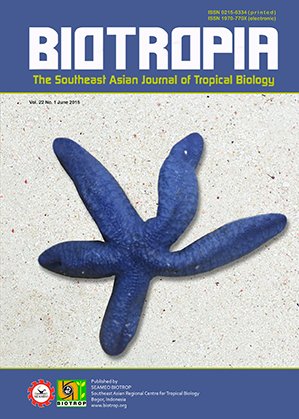
Tags
Response of Lonkida (Nauclea orientalis L.) towards Mycorrhizal Inoculum in Waterlogged Condition
Content Language : English

This study was carried out to examine the morpho-anatomical adaptation, survival, growth, biomass and nutrient uptake of lonkida (Nauclea orientalis L.) from different habitats inoculated with arbuscular mycorrhizal fungi on waterlogging conditions for 90 days. The results showed that the lonkida seedlings formed lenticels (100%), adventitious roots (41%) and aerenchym under waterlogging conditions. Seedling from dry land habitats, both mycorrhizal and no-mycorrhizal, have a height growth rate lower than those from other habitat types. Similarly for relative growth rates of shoot (RGRs), root (RGRr) and total (RGRt) dry weight and the ratio of root shoots. Treatments of temporal swamp habitat without waterlogging and waterlogging and savanna with waterlogging have RGRt greater than other treatments. In general, plant dry weight (root, shoot and total) and total N in roots and shoots was greater in the interactionbetween temporalswamp habitat with no-mycorrhizal on waterlogging condition. Independently, waterlogging increase the pool of average height gain (18%), diameter (46%) and leaf area (40%), leaf length (17%) and leaf width (21%). Nonetheless, treatment waterlogging decreased variable number of leaves (9%) andAMF colonization (71%). The results of this study indicate that the seedlings from the temporal swamp has good growth and high biomass in the conditions without or with waterlogging.
Link

This work is licensed under a Creative Commons Attribution-NonCommercial-NoDerivatives 4.0 International License.
